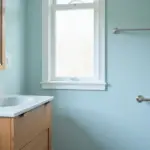Imagine stepping onto your balcony and being enveloped by a lush, vibrant ecosystem of plants, their leaves dancing in the gentle breeze, the air crisp and fresh with the scent of herbs and flowers. This isn’t a far-off dream, but a reality you can create with your very own balcony vertical garden.
As someone who’s spent years designing sustainable spaces in the harsh Alaskan climate, I’ve learned that with creativity and the right approach, even the smallest balcony can become a thriving green oasis. Whether you’re in Anchorage or Albuquerque, the principles of balcony vertical gardening remain the same – maximize space, embrace nature, and create harmony between human habitation and the environment.
In this guide, we’ll explore how to create your balcony vertical garden, from the practical benefits to the nitty-gritty of design and maintenance. Your balcony vertical garden might just become the crown jewel of your beautiful balcony apartment decor.

So, grab a cup of herbal tea (perhaps from your future balcony herb garden?), and let’s embark on this green adventure together. It’s time to redefine what’s possible in urban living and bring a slice of the wild into our concrete jungles.
Benefits of Vertical Gardens
In urban living, space is often at a premium. But much like the towering spruce trees of Alaska’s forests, your balcony vertical garden can make use of vertical space. By growing upwards, you’re creating a three-dimensional canvas of greenery.
Imagine transforming a bare 50-square-foot balcony into a lush 200-square-foot vertical garden. Use tiered shelving, hanging baskets, and wall-mounted planters to create layers of verdant life. Look for plants that play well with others – herbs like basil and thyme are not just space-efficient, they’re also culinary dynamos.
Improve Air Quality
Let’s talk about the silent superpower of plants – air purification. Just as the vast boreal forests of Alaska act as the planet’s lungs, your balcony vertical garden can be the lungs of your home.

Studies have shown that indoor plants can remove up to 87% of air toxins in 24 hours. Imagine your balcony vertical garden as a living, breathing air filter. Plants like spider plants, peace lilies, and snake plants are particularly adept at scrubbing the air clean.
Create Calming Oasis
In the hustle and bustle of city life, we all need a sanctuary. Your balcony vertical garden can be that oasis of calm, a green retreat where the stresses of the day melt away.
There’s something profoundly soothing about being surrounded by plants. The gentle rustle of leaves, the earthy scent of soil, the vibrant greens – all these elements work together to create a space of tranquility and rejuvenation.
Consider incorporating plants known for their calming properties. Lavender, with its soothing scent, can help reduce anxiety. The soft, fuzzy leaves of lamb’s ear invite touch, grounding you in the present moment.
Design and Planning
When creating a balcony vertical garden, think of yourself as an urban explorer charting new territory. Every inch of space is valuable real estate, waiting to be transformed into a thriving ecosystem.
Start by mapping out your balcony. What’s the square footage? Where does the sun hit? Are there any structural elements you can utilize? Once you have a clear picture, it’s time to get creative with your space usage.
Consider multi-functional elements. A sturdy shelf unit can double as a privacy screen and a home for your plants. Railing planters make use of often-overlooked space. And don’t forget about corner spaces – they’re perfect for tall, structural plants that can act as natural partitions.

Remember, in a balcony vertical garden, the sky’s the limit – literally. Look up and think about how you can use that vertical space. Hanging baskets, tiered plant stands, and wall-mounted planters are your best friends here. And speaking of plant stands, why not try your hand at DIY plant stands for your balcony garden? It’s a great way to customize your space and add a personal touch to your green oasis.
Sunlight and Shade Needs
Understanding the light patterns on your balcony is crucial for a thriving vertical garden. It’s like reading the landscape in the Alaskan wilderness – you need to know where the sun hits and where the shadows fall to make informed decisions.
Start by observing your balcony at different times of the day. Does it get direct sunlight? For how long? Are there areas that remain shaded? This information will guide your plant selection and placement.
If your balcony is sun-drenched, consider creating shade for plants that prefer cooler conditions. Retractable awnings or shade cloths can provide relief during the hottest parts of the day. On the flip side, if your balcony is mostly shaded, look for plants that thrive in low-light conditions or consider using grow lights to supplement natural light.
Wind and Watering Challenges
Urban balconies can sometimes feel like they’re in the eye of a storm, especially if you’re in a high-rise. But don’t let that deter you – with the right strategies, your balcony vertical garden can weather any storm.
First, let’s talk about wind protection. Windbreaks can be both functional and attractive. A trellis covered in climbing plants not only shields your other plants from strong gusts but also adds an extra layer of greenery to your garden.

When it comes to watering, consistency is key. In a vertical garden, gravity is both your friend and foe. Water will naturally drain downwards, which is great for preventing waterlogging, but it means your higher plants might dry out faster.
Consider installing a drip irrigation system. It’s like creating a miniature version of the efficient watering systems used in large-scale vertical farms. These systems deliver water directly to the plant roots, minimizing waste and ensuring even distribution.
Choosing Plants
Selecting the right plants for your balcony vertical garden is like casting the perfect ensemble for a play – each has its role, and its strengths, and together, they create something magical.
Let’s start with the stars of the show – plants that thrive in vertical spaces. Cascading plants like pothos, string of pearls, or trailing petunias can create stunning green curtains. They’re perfect for hanging baskets or top-tier planters.
For a pop of color, consider compact flowering plants like geraniums, pansies, or marigolds. They’re like the character actors of your garden, bringing vibrancy and life to every scene.
And let’s not forget the workhorses – herbs and vegetables. Basil, mint, cherry tomatoes, and compact chili peppers are not just space-efficient, they’re also incredibly rewarding. Imagine stepping out onto your balcony and plucking fresh herbs for your evening meal – it’s like having a farmers market at your fingertips.

Sunlight and Shade Tolerance
Just as different animals adapt to various ecological niches in nature, plants have evolved to thrive in specific light conditions. Understanding these needs is key to a successful balcony vertical garden.
For those sun-drenched spots, consider heat-loving plants like succulents, lavender, or rosemary. These plants are the sun-worshippers of the plant world, soaking up those rays like they’re on a tropical vacation.
In shadier areas, ferns, hostas, and shade-loving coleus can create a lush, forest-floor feel. These plants are like the mysterious creatures of the undergrowth, thriving in the cool, dim corners of your balcony.
And for those in-between spaces? Plants like impatiens, begonias, or spider plants are adaptable all-rounders, happy in partial sun or shade.
Low-Maintenance Options
For those of us juggling busy lives, low-maintenance plants are the unsung heroes of the balcony vertical garden.
Succulents and cacti are the camels of the plant world – they store water in their leaves and stems, making them incredibly drought-tolerant. They’re perfect for those weeks when life gets hectic and watering slips your mind.

Snake plants and ZZ plants are like the hardy pioneers of the plant kingdom. They can tolerate a wide range of conditions and neglect, yet still look fantastic. These plants are so tough, that they could probably survive an Alaskan winter (though let’s not test that theory).
Wall Planter Options
When it comes to balcony vertical gardens, hanging planters and stands are like the Swiss Army knives of the gardening world – versatile, space-efficient, and endlessly useful.
Hanging planters are perfect for creating layers of greenery without taking up precious floor space. They’re like the acrobats of the plant world, defying gravity and adding visual interest at every level.
Plant stands allow you to create tiers of plants, maximizing your vertical space while keeping everything easily accessible. Look for adjustable stands that can grow with your plants, or multi-tiered options that can house a variety of plant sizes.
Wall-Mounted Systems
Wall-mounted planting systems are the backbone of many balcony vertical gardens. They’re like the climbing walls of the plant world, allowing you to create stunning living tapestries of greenery.
Pocket planters are a popular choice. These fabric or plastic pouches attach directly to your wall, creating individual homes for a variety of plants. They’re perfect for herbs, succulents, or small flowering plants.

For a more structured look, consider modular wall planters. These interlocking units allow you to customize your design, adding or removing sections as your garden evolves.
Hydroponic Systems
Now, let’s dive into the high-tech world of hydroponic systems. These soil-less growing methods are like the spaceships of the gardening world – sleek, efficient, and a glimpse into the future of urban agriculture.
Hydroponic systems use nutrient-rich water instead of soil to grow plants. They’re incredibly water-efficient, perfect for those of us in drier climates or with water restrictions. Plus, they’re clean and compact, making them ideal for balcony settings.
One of the great advantages of hydroponics is the ability to grow plants faster and in smaller spaces than traditional soil methods. It’s like giving your plants a supercharged growing environment.
Materials and Tools
When it comes to materials for your balcony vertical garden, think of it like gearing up for an Alaskan expedition – durability is key. You want materials that can withstand the elements, just like the rugged landscape of the Last Frontier.
For containers, look for weather-resistant options. Fiberglass or high-quality plastics are lightweight yet durable. They’re like the modern-day equivalent of traditional clay pots but without the risk of cracking in freezing temperatures.

For any metal components, stainless steel or powder-coated aluminum are your best bets. They’ll stand up to moisture and won’t rust, ensuring your balcony vertical garden stays sturdy and safe.
When choosing flooring for a balcony garden, consider materials that can withstand moisture and are easy to clean. Composite decking or outdoor tiles can create a beautiful base for your vertical garden while standing up to the rigors of gardening.
Essential Gardening Tools
Just as every Alaskan adventurer has their essential gear, every balcony gardener needs a well-equipped toolbox. Here are some must-haves for your balcony vertical garden:
- Pruning shears: These are the Swiss Army knife gardening tools.
- Hand trowel: Perfect for planting, repotting, and mixing soil.
- Watering can with a long spout: This will help you reach those high-up plants.
- Spray bottle: Great for misting plants that love humidity.
- Gloves: Protect your hands from thorns, soil, and plant saps.
- Soil moisture meter: This handy device takes the guesswork out of watering.
Trellises and Supports
In the world of balconies vertical gardens, trellises, and supports are like the unsung heroes of the plant world. They’re the sturdy spruce trees of the Alaskan forests, providing structure and reaching toward the sky.
For climbing plants like peas, beans, or ornamental vines, a sturdy trellis is essential. Look for options that can be easily mounted to your balcony railing or wall. Expandable trellises are particularly useful – they can grow along with your plants.

Don’t overlook the power of simple bamboo stakes. They’re lightweight, eco-friendly, and perfect for supporting everything from tomato plants to top-heavy sunflowers.
Irrigation and Drainage
Watering a balcony vertical garden can sometimes feel like trying to make it rain upwards. But with the right techniques, you can ensure your plants stay hydrated without turning your balcony into a water park.
Drip irrigation systems are the gold standard for balcony vertical gardens. They deliver water directly to the plant roots, minimizing waste and reducing the risk of fungal diseases. It’s like having a personal water butler for each of your plants.
For those who prefer a more hands-on approach, consider self-watering planters. These clever containers have a reservoir at the bottom that allows plants to drink as needed. It’s like giving your plants their own personal water cooler.
Proper Drainage Techniques
In a balcony vertical garden, good drainage isn’t just important – it’s essential. Without it, you risk waterlogged soil, root rot, and a very unhappy plant community.
Start with the basics – make sure all your containers have drainage holes. It sounds simple, but it’s crucial. These holes allow excess water to escape, preventing your plants from sitting in soggy soil.

Consider adding a layer of gravel or broken pottery shards at the bottom of your containers before adding soil. This creates a space for excess water to collect, away from your plant’s roots. It’s like creating a mini water table for each plant.
Automated Irrigation Systems
For those of us with busy lives (or a tendency to forget watering day), automated irrigation systems can be a game-changer for your balcony vertical garden. They’re like having a tireless gardener who never forgets to water your plants.
Timer-based systems are a great starting point. You can set them to water your plants at specific times, ensuring consistent care even when you’re away. It’s like setting an alarm clock for your garden.
For a more high-tech solution, consider a smart irrigation system. These can be controlled via your smartphone and often come with soil moisture sensors. They’ll water your plants based on actual needs rather than a set schedule. It’s like giving your garden its weather station and personal assistant rolled into one.
Maintenance Tips
Maintaining a balcony vertical garden is like tending to a miniature ecosystem. It requires regular attention, but the rewards are well worth the effort.
Start with a routine inspection of your plants. At least once a week, take a close look at each plant. Check for signs of pests, diseases, or nutrient deficiencies. It’s like being a doctor for your green patients – catching issues early can prevent bigger problems down the line.

Pruning is another crucial aspect of plant care. Regular trimming not only keeps your plants looking tidy but also promotes healthy growth. For herbs, frequent harvesting encourages bushier growth – it’s a win-win situation!
Pest and Disease Control
Even in the urban jungle, pests and diseases can find their way to your balcony vertical garden. But don’t worry – with vigilance and the right techniques, you can keep your plants healthy and pest-free.
Start with prevention. Healthy plants are more resistant to pests and diseases. Ensure your plants are getting the right amount of light, water, and nutrients. It’s like building up your garden’s immune system.
For pest control, consider natural solutions first. Neem oil, insecticidal soaps, and diatomaceous earth are all effective and eco-friendly options. You can even introduce beneficial insects like ladybugs to your garden – they’re like a tiny, natural pest control army.
Seasonal Adjustments
Just as the Alaskan landscape changes dramatically with the seasons, your balcony vertical garden will need adjustments throughout the year.
In spring, it’s all about preparation. This is the time to clean up any winter damage, refresh your soil, and start planting. Think of it as your garden’s New Year – a fresh start full of potential.
Summer often means more frequent watering and perhaps some shade protection for sensitive plants. It’s like helping your garden stay cool during a heatwave.

Fall is harvest time for many plants. It’s also when you should start preparing for winter. Bring sensitive plants indoors or protect them if you expect frost.
Winter doesn’t mean the end of your gardening season. Many plants can overwinter on a balcony with proper protection. Use frost cloths or bring containers close to the building for warmth. Some plants, like kale or winter pansies, even thrive in cooler temperatures.
Remember, each season brings its joys and challenges. Embracing these changes is part of the beauty of gardening.
Final Thoughts
Creating a balcony vertical garden is more than just a hobby – it’s a way to bring a piece of nature into our urban lives, to create a living, breathing ecosystem in the heart of the city. It’s about reconnecting with the natural world, even if that connection is happening twenty stories up.
As you embark on your balcony vertical gardening journey, remember that like any ecosystem, your garden will evolve. There will be successes and setbacks, moments of frustration, and moments of pure joy. Embrace it all. Let your garden teach you about resilience, adaptability, and the incredible tenacity of nature.

Your balcony vertical garden is a testament to the fact that green spaces can thrive anywhere – from the vast Alaskan wilderness to the smallest urban balcony. It’s a reminder that with creativity, patience, and a little bit of effort, we can create our pocket of wilderness, our slice of green serenity amid city life.
So go ahead, get your hands dirty. Plant that first seed, hang that first planter. Watch as your balcony transforms into a lush, vibrant oasis. Your balcony vertical garden isn’t just changing your space – it’s changing your perspective, one plant at a time.
Remember, in the words of the great naturalist John Muir, “The mountains are calling and I must go.” In our urban world, perhaps it’s our balconies that are calling – calling us to create, to nurture, to grow. It’s time to answer that call. Happy gardening!






